Review: HTC Inspire 4G
Feb 2, 2011, 5:32 PM by Eric M. Zeman
Phone Scoop takes AT&T's first "4G" phone for a whirl. While the hardware and system performance impress, does the Inspire's mobile broadband prowess live up to the "4G" marketing hype?
Form
Is It Your Type?
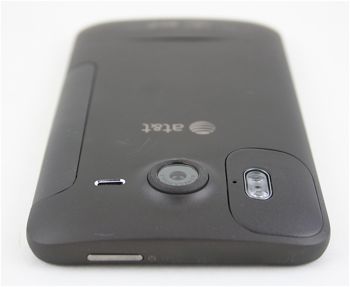
Whether or not you want to define AT&T's HSPA+ network as 4G, the HTC Inspire 4G is the first device for AT&T to bear the “4G” designation. Even without the 4G moniker, the Inspire is an inspiring device for Android lovers.
Body
HTC hasn't strayed too far with its design language in recent years. Its high-end devices all bear a strong family resemblance, and the Inspire 4G doesn't break this mold. The combination of glass, metal and plastic materials is appealing, and the device looks classy even if a little on the vanilla side. Thanks in part to the massive display, the Inspire 4G is large, hefty phone. Rounded edges make it rest comfortably in your hand, though. The shape means it will be easy to slip into a pocket, but the weight will always remind you that it is there.
The front face of the Inspire is huge. The phone has a 4.3-inch display that takes up 85% of the Inspire's face. The typical Android controls are below the screen and are capacitive - rather than physical - buttons. I didn't have any problem with these buttons, but some might prefer real buttons. I just wish Google would mandate the order that these keys appear so all Android devices have the same layout.
The volume toggle is a thin plastic strip on the left side of the phone. It is among the worst volume toggles I've ever used. It is too hard to find, and offers such little feedback that you have to check the display to see if pressing it had any effect.
The 3.5mm headset jack and microUSB port are tucked into the bottom edge of the Inspire. This is s typical HTC design move, though I dislike having the headset jack on the bottom of a device. There are no controls along the right side of the device, and only the power/screen lock key is on the top. It has good travel and feedback.
The 8 megapixel camera module protrudes from the back of the Inspire 4G like an eyeball peering out at the world. It adds some thickness to the device, but I like the way it breaks up what would otherwise be a boring back cover.
There are two back covers on the Inspire 4G to worry about. First, the bottom has a plastic sleeve that is slid off by pulling down. You need to remove this in order to access the microSD port and SIM card port. Speaking of the battery, there is a narrow hatch on the edge next to the volume toggle. It requires some work to pry off, and there's a bit of finesse required. Once you get the hang of it, though, it isn't a problem. The battery for the Inspire 4G is slid into this space sideways, and the hatch locks it into place.
The Three S’s
Screen
What's not to like about a 4.3-inch display that packs in 800 x 480 pixels? It looks fantastic. Colors appear rich and full, blacks are nice and inky, and it's bright enough to light up a nightclub. Outdoor visibility is not exactly awesome, and much of the colors are washed out in sunlight. It is still mostly usable, though, with the exception of some of the inner menus.
Signal
The Inspire 4G is the first smartphone to take advantage of AT&T's fastest HSPA+ network. Mind you, AT&T still hasn't announced how fast its HSPA+ network really is. That said, the Inspire displayed a little “H+” symbol most of the time I used it. Signal strength ranged from zero to full bars, but the Inspire 4G never lost contact with the network entirely. In my short testing period, it did not drop any calls. Network speeds were all over the map. Downloads ranged between a paltry 800Kbps and a not-so-impressive 2.1Mbps. Uploads were a miserable 122Kbps to 240Kbps. (For comparison, the iPhone 4 reached a max download of 5.1Mbps and upload of 880Kbps in the same location using the same testing tools.) What exactly about the Inspire 4G is, uh, 4G, AT&T? To be fair, I have yet to transit my entire signal strength testing circuit due to the extremely cruddy weather in NJ.
Sound
Call quality via the Inspire 4G was very good. With the exception of a very minor hiss, I didn't experience any sound issues when making voice calls. Voices coming through the earpiece had a warm sound to them and avoided the digital overtones that can rear up. The earpiece speaker was plenty loud. Set to the maximum, it should be easy to hear most calls. Quality of speakerphone calls was the same, just a slight hiss. The speakerphone could be set loud enough to suit most people. Ringers and alert tones were loud, but not nerve-gratingly so. You won't miss calls. The vibrate alert was average.
Battery
The Inspire 4G just barely made it through 24 hours on a single charge. This is about what I expected, since it is an HTC Android device with Sense. You're going to have to charge it every night. If you use the WI-Fi hotspot feature, plan to plug it in somewhere when doing so. The hotspot feature will kill a full charge in several hours.
Basics
Menus
The Inspire 4G is the first handset to offer HTC's new Sense design in the United States. From a user experience point of view, it doesn't really bring a lot to the table. Most of Sense's features are unaltered. What the new Sense does is help the phone to boot faster and it adds several features, such as a unified inbox with labels.
Sense offers the same series of seven home screens, each of which can be populated with apps, shortcuts or widgets. HTC and AT&T have preloaded most of the screens, but these can all be completely customized. On the home screen, there are three software controls at the bottom of the screen. One opens the main menu (this could be a bigger button, by the way), one takes you to the phone, and the third opens the “Personalize” panel. The Personalize panel lets you find and adjust all the phone's settings quickly right from the home screen. This includes HTC's Scenes, wallpaper, skins, sounds and alerts, etc.
The drop-down notification shade includes access to alerts as well as recently used applications. Rather than limiting the selection to the most recent four apps, you can slide the app listing sideways in the drop-down shade to get at the full list of open or recently opened apps. The inner menus don't appear to be altered.
The most important thing I noticed was a huge improvement in speed. I've seen Sense get really bogged down on some devices. On the Inspire 4G, Sense responded to every single touch, swipe, and poke immediately. Menus and apps all opened faster and the user interface felt much more fluid that it has in the past.
The new Sense can also access HTC's Sense.com, which can be used to create back-ups of settings and controls for the phone.
Calls/Contacts
Due to the pervasiveness of the software phone button on the home screens, getting to your phone calls is pretty easy. By default, it opens with the dial pad on the bottom half of the screen and your top favorites above it.
The phone app automatically sorts through your contacts as you dial a number or type a name, so you can easily jump though a large contact database quickly.
If you've synced the Inspire 4G with a Facebook account, the device automatically adds not only your friends' Facebook profile pictures to their contact info, it also ports over any phone numbers stored in their Facebook profile. This feature isn't unique to the Inspire 4G, though.
Sense also provides a great home screen widget for managing your top contacts, with easy-to-use controls for calling, texting or emailing them with minimal effort. The main contact app has a neat slider control on the bottom that lets you sort between different contact databases, such as on-device, Google, Exchange, and social networks.
The synergy between the calling and contacts apps is very well done with Sense. I like what HTC has done to make them one tool, rather than separate functions.
Messaging
The Inspire 4G tackles email, SMS, MMS, IM, Twitter, Facebook, MySpace, Picasa, Flickr, as well as any other Sense phone fielded by HTC in recent memory.
There are several different avenues to get your email. First, there is the HTC-made email program. It can be used for Exchange or POP3/IMAP4 webmail accounts. While the full app isn't as feature rich as the native Gmail application, HTC created a great home screen widget for its email app that lets you sort through emails more elegantly than looking at a normal inbox. The Gmail app functions the same as it does on other Android devices.
The Inspire 4G has only one SMS application (unlike other Sense devices, which had two). The SMS app is the one developed by HTC for Sense. It offers the same functionality as the native Android SMS app, but is a lot nicer to look at. As with the email application, it also has a very good home screen widget.
Google Talk is the only native IM app on board. Want access to more IM networks? Go fishing in the Android Market.
There are a number of ways to connect to social networks with the Inspire 4G. First, there's HTC's FriendStream. The FriendStream app reaches into your Facebook and Twitter accounts and pulls down status updates in a stream that you can look at quickly. It has a great home screen widget, though I find this widget to be a bit unreliable when it comes to real-time updates.
HTC's Peep application is not included out of the box, but can be downloaded from either the HTC Hub or the Android Market. Personally, I like the native Facebook and native Twitter applications better than Friendstream and Peep, but at least HTC provides us with options.
Extras
Media
Music
The Inspire 4G uses the same music player that's on other Sense phones. It starts with the same features as found on the native Android music player, but adds a few to the mix.
The sound enhancer tools allow users to shape the sound in a handful of different ways. First, it offers Dolby Mobile. Dolby Mobile makes the most sense when playing back movies via headphones or when shared with other devices via DLNA. The SRS Enhancement makes its own adjustments to the sound automatically, though I found music to sound a bit tinnier with this feature enabled. Last, when headphones are connected, users can enable and choose from a number of preset EQs. These go well beyond the options available to most Android handsets.
Music playback sounded very good through the speaker, great through stereo headphones, and good through stereo Bluetooth headphones.
The Inspire 4G forgoes any sort of music store. The Amazon MP3 store, for example, is MIA. It - and other music apps such as Pandora and Slacker - can be downloaded from the Android Marketplace. The device does offer an FM radio, which works when headphones are plugged in.
Video
There are several ways to consume video on the Inspire 4G. First, HTC offers its own video player application. This app is separate from the music player app, and works with sideloaded content. Many Android devices ship without a dedicated video app, and users must find and download their own. It worked flawlessly for me. There is also the new YouTube application, which has a live home screen widget that updates with the latest/best videos constantly. The BlockBuster movie application is on board for renting and purchasing movies. Last, the Inspire 4G has AT&T TV on board, which is run by MobiTV. It offers snack-sized videos and TV snippets.

Camera
Camera
HTC has refreshed the camera a bit since the last Sense device I tested. It launches quickly with a press of the software button and uses 90% of the screen as the viewfinder. The remaining 10% hold several key controls and the shutter button. These controls are great, as they provide quick access to vital things such as the flash, the camcorder, etc.
You need to press the Menu key on the device to access the full camera settings. I wish a button for the settings was included on the display, instead. The settings let you fine-tune the camera's behavior. Some include ISO (100-800), white balance, auto focus, face detection, and brightness.
The Inspire 4G is hurt a little bit by the lack of a physical camera button. Still, using the on-screen software button isn't terrible. The Inspire takes about a second to focus most shots, and another second or so to capture the image and show the review screen. The review screen can be set to 2 seconds, 1 second, or off, allowing you to get straight back to the camera. The Inspire also offers touch-to-focus, meaning you can focus on a specific item in the viewfinder by pressing it.
Surprisingly, the Inspire 4G lacks a user-facing camera. That means no video chatting. In the world of FaceTime, that's a glaring omission.
Gallery
As with other Sense phones, the Inspire 4G uses an HTC-made gallery. It can be opened from either the camera or the menu, and presents pictures in either a timeline or via grid. The timeline mixes pictures and videos into one long stream of images and movies. The entire stream flows back and forth as you swipe your finger to and fro in a very fluid manner.
As far as editing goes, images can be cropped and rotated. Users can also apply a number of effects. These include the usual (B&W, Sepia) as well as a few that are more meant to improve the image (auto-enhance, color balance) rather than alter it.
Tools for sending the images include email, MMS, Bluetooth, Facebook, Twitter and so on.
Photos/Videos
Photos
The Inspire 4G has an 8 megapixel camera. Images were for the most part pretty good. Focus was accurate the bulk of the time, though the Inspire took its fair share of soft shots. In well-lit settings, grain/noise was completely absent from the resulting images. Colors and white balance were accurate, as well. The only issue I noticed consistently was exposure. Whites were nearly always blown out.
Adding the flash to the mix helps in low-light situations, but remember that flashes are for short-range picture taking. If you want a sharable shot of your friends celebrating a birthday in a dark restaurant, the images will likely turn out pretty good with the flash on. If you us the flash at a concert, expect to see only the back of the head of the person standing in front of you.
Video
The Inspire can record video at up to 720p HD and performs above average.
When the phone is held still, video is sharp, mostly free of noise/grain, and colors look very accurate. If you pan the Inspire about, the video will smear a bit until the phone is still again. In darker environments, details tended to get lost, but when used outdoors, it takes fantastic video.
Browse/Customize
Browser
The browsing experience on the Inspire 4G is really no different than that of any other Android phone running Android 2.2. The same set of tools is available for controlling and interacting with the browser, and the large screen means web content has more breathing space.
Flash content worked pretty well, and most normal in-line video played back as intended. Browsing speeds weren't as slow as I feared they'd be (based on the poor speed test performance). Web sites didn't load lickety split, but they weren't slow either. Most sites, including intensive ones such as NYTimes.com, popped up in the 8- to 12-second range.
Customize
Thanks in part to HTC's Sense software, the Inspire 4G can be customized by end users more than most. Wallpapers, live (animated) wallpapers, ringtones, alerts, picture IDs, etc., can all be adjusted.
Because the Inspire 4G has 7 home screens, widgets, shortcuts and apps spread across those screens make for a highly personalized experience. Throw in the extra, customizable Scenes (different profiles for the home screens that allow for different app configurations based on usage — i.e., Work, Play, Weekend, etc.) that Sense offers, and the sky's the limit when it comes to making the Inspire 4G your own.
Extras
Apps
The Inspire 4G has access to all the same applications that other Android handsets do via the Android Market. Now that Google has launched the Android Market web store, it will be even easier to find and install applications on the Inspire 4G. It is worth pointing out, however, that the Inspire 4G can not install off-market apps. This is a limitation across all AT&T-branded Android phones. It means no beta versions. Speaking of AT&T, the Inspire 4G is littered with AT&T apps, such as AT&T Family Map, AT&T Code Scanner, AT&T Navigator, MyAT&T, etc. These apps can't be removed.
Bluetooth
I didn't have a single problem using the Inspire 4G's Bluetooth features. I paired it to mono and stereo headsets with no problems. Call quality through a mono headset was excellent, and music quality through stereo headphones was very good. I was also able to pair with my PCs for file sharing.
Clock
HTC + Sense + Android = best ever set of options for a smartphone clock. The Inspire 4G easily replaces a wrist watch, stop watch, egg timer, world clocks and pretty much any other timepiece you may have around (OK, except for maybe that antique cuckoo-clock).
Navigation
The Inspire has both Google Maps 5.1 and AT&T Navigation on board. Both are capable navigation applications. AT&T's nav app costs $10 per month to use; Google Maps is free.
Wrap-Up
The Inspire 4G is the best Android handset being offered by AT&T at the moment. It gets almost all the basic features right.
The calling experience, contact management, battery life and Sense user interface make using the systems of the Inspire 4G a breeze. I was pleased with call quality, though during my testing period I was unable to find any of those 4G speeds being touted by AT&T.
HTC has made some tasteful improvements to the email and SMS options, and the social networking features are nearly limitless with the help of the Android Market. HTC also improved the music player (huzzah for EQs!) and the video playback options are better than on most other Android handsets.
Add in good camera software, good imaging capabilities, a strong browser and a highly customizable user experience, and what you get is a solid phone.
For $99, the Inspire 4G is an easy phone to recommend. If you like big-screened Android phones that work really well, look no further than the Inspire 4G.

Comments
after the htc evo
HSPA+ vs HSPA+ w backhual
(continues)


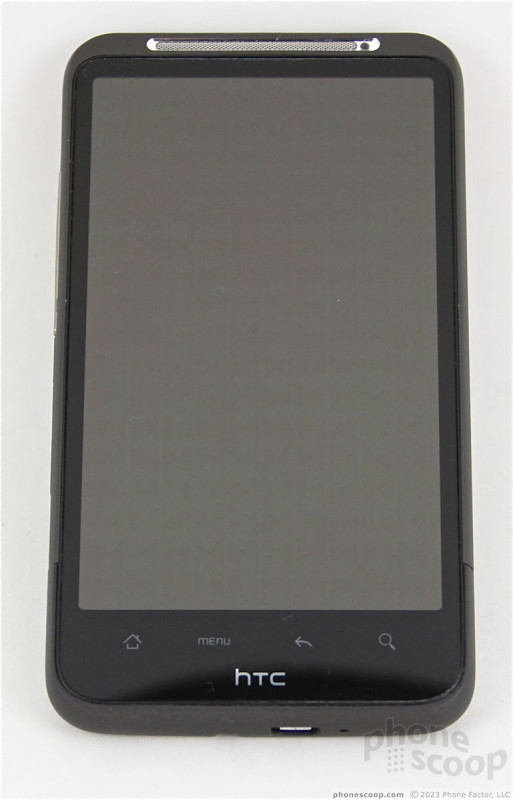






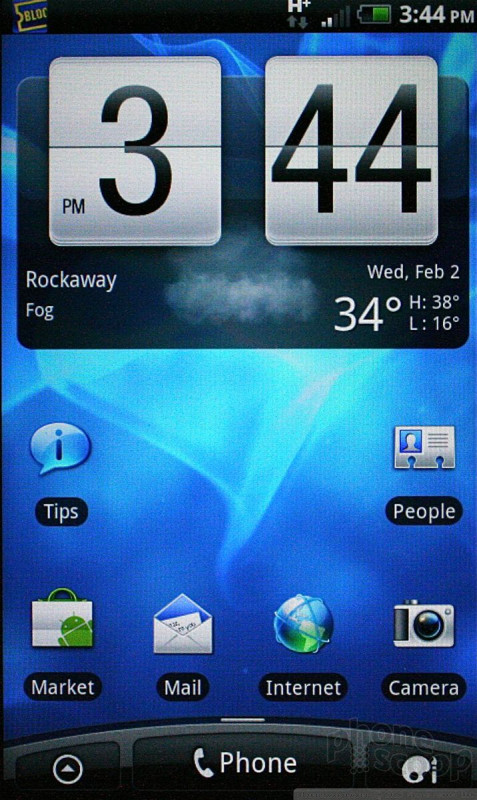





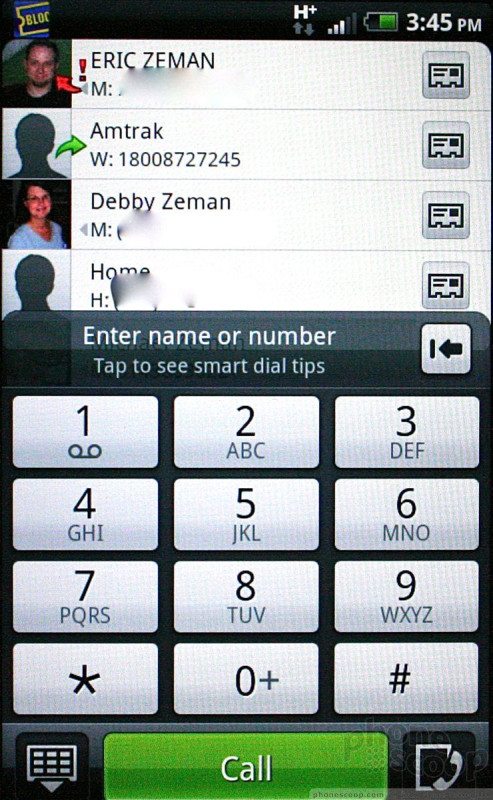


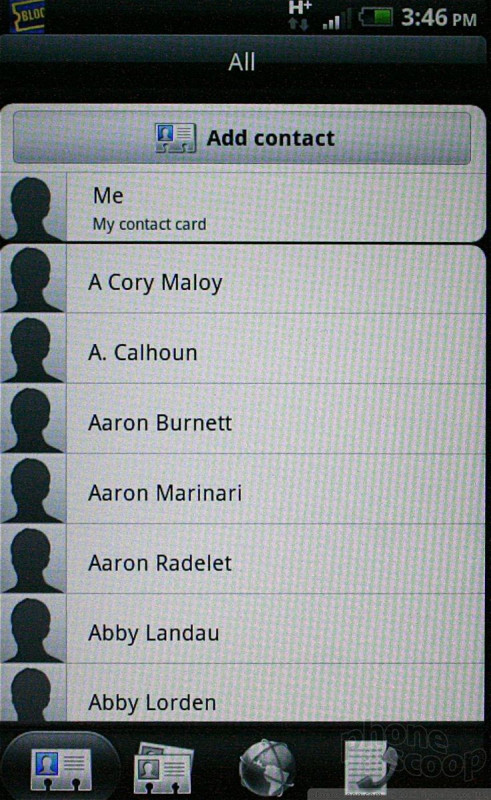



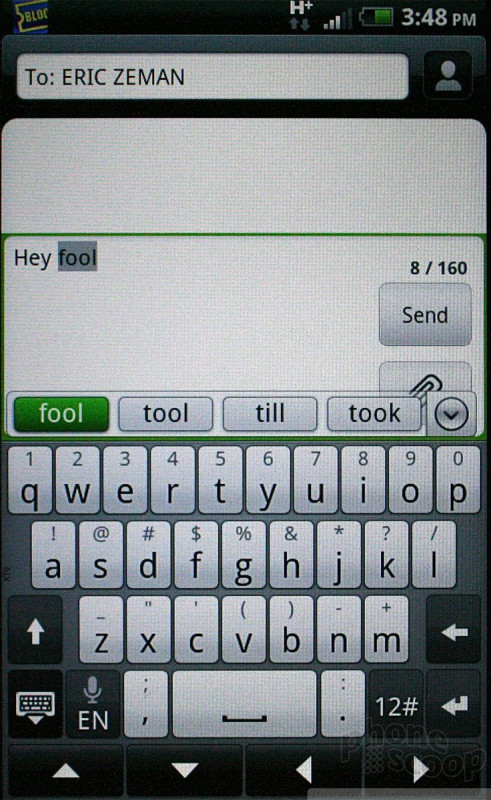





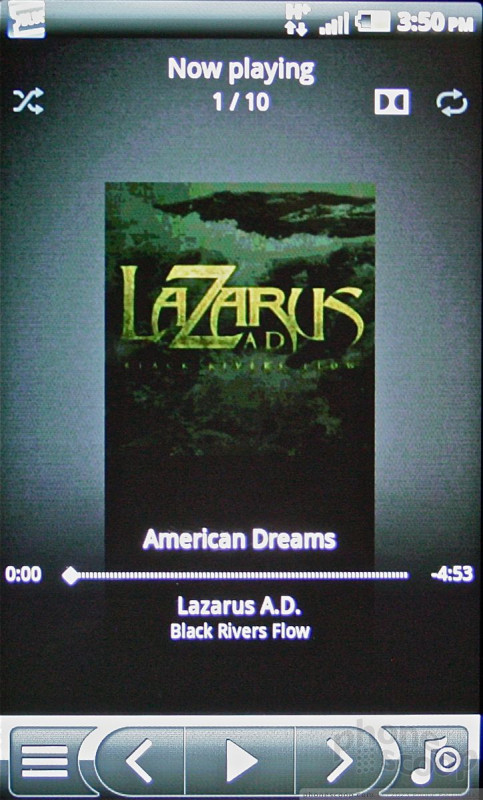



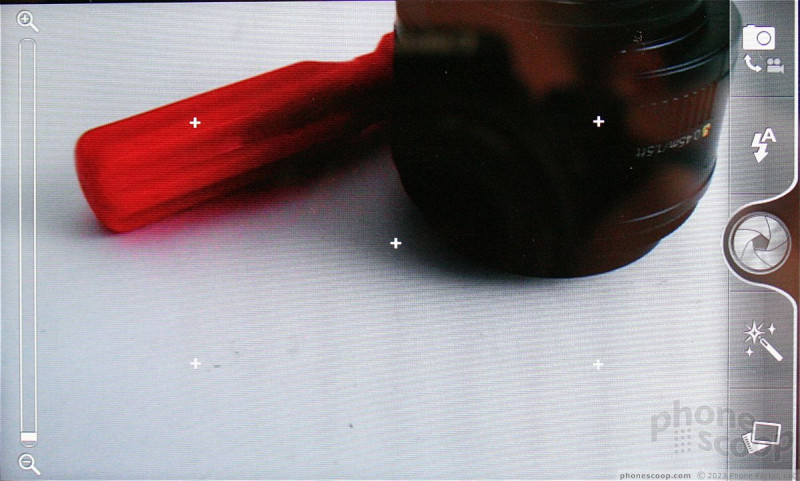


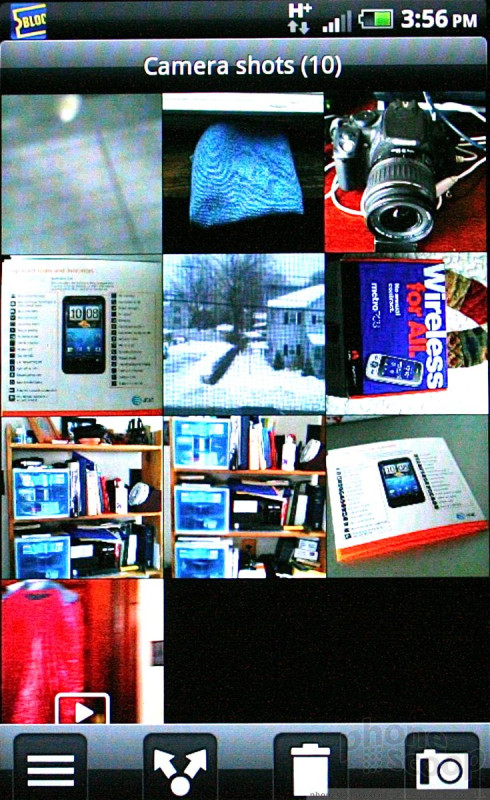


















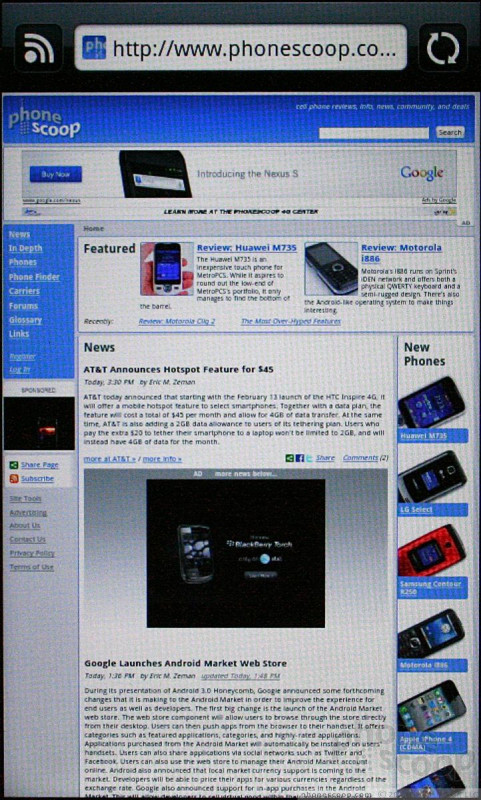



 Samsung S24 Series Adds More AI, Updates the Hardware
Samsung S24 Series Adds More AI, Updates the Hardware
 iPhone 16 Brings More Features to All Price Points, Including New Camera Control
iPhone 16 Brings More Features to All Price Points, Including New Camera Control
 HTC Inspire 4G
HTC Inspire 4G



